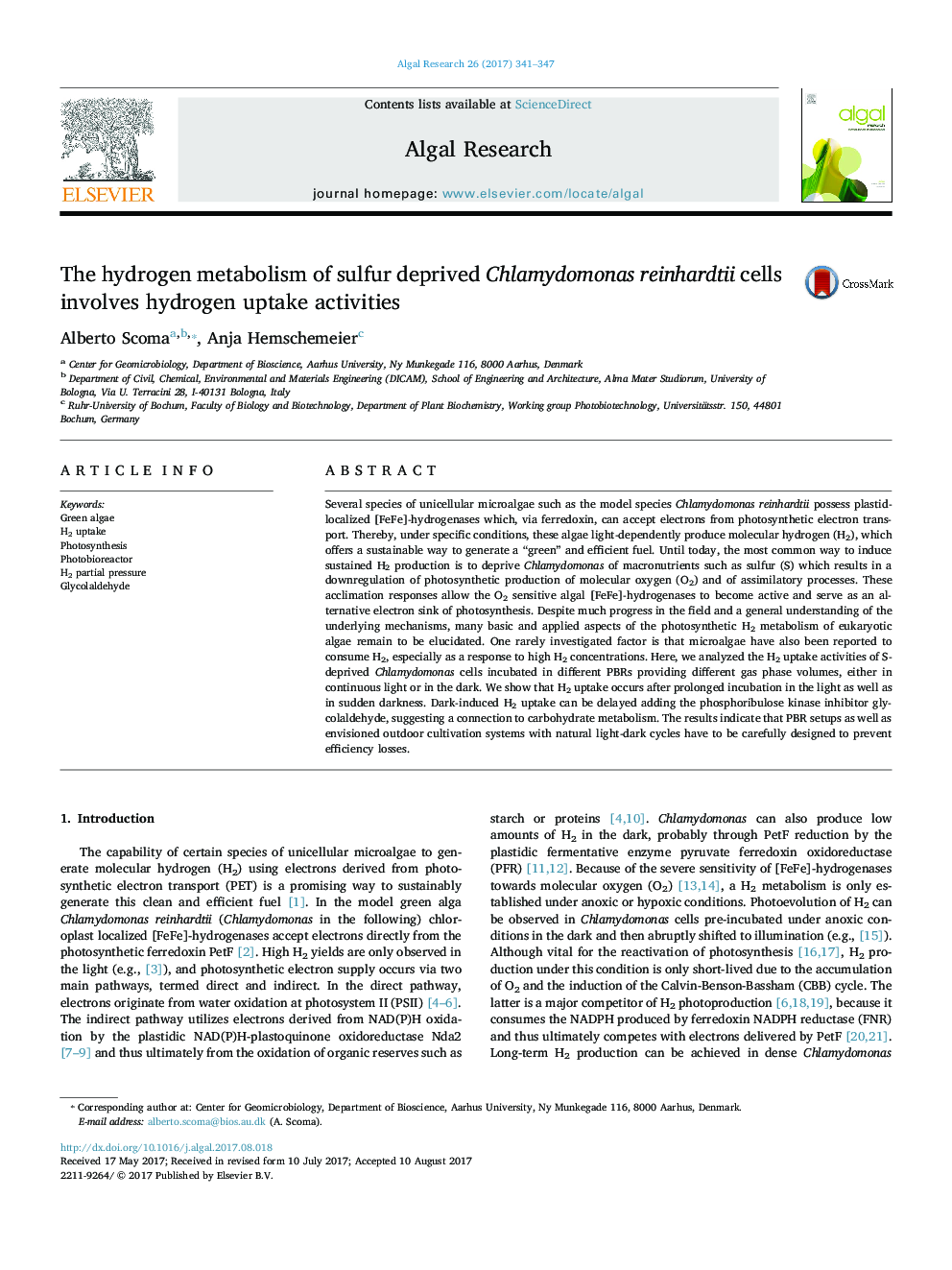| Article ID | Journal | Published Year | Pages | File Type |
|---|---|---|---|---|
| 5478273 | Algal Research | 2017 | 7 Pages |
Abstract
Several species of unicellular microalgae such as the model species Chlamydomonas reinhardtii possess plastid-localized [FeFe]-hydrogenases which, via ferredoxin, can accept electrons from photosynthetic electron transport. Thereby, under specific conditions, these algae light-dependently produce molecular hydrogen (H2), which offers a sustainable way to generate a “green” and efficient fuel. Until today, the most common way to induce sustained H2 production is to deprive Chlamydomonas of macronutrients such as sulfur (S) which results in a downregulation of photosynthetic production of molecular oxygen (O2) and of assimilatory processes. These acclimation responses allow the O2 sensitive algal [FeFe]-hydrogenases to become active and serve as an alternative electron sink of photosynthesis. Despite much progress in the field and a general understanding of the underlying mechanisms, many basic and applied aspects of the photosynthetic H2 metabolism of eukaryotic algae remain to be elucidated. One rarely investigated factor is that microalgae have also been reported to consume H2, especially as a response to high H2 concentrations. Here, we analyzed the H2 uptake activities of S-deprived Chlamydomonas cells incubated in different PBRs providing different gas phase volumes, either in continuous light or in the dark. We show that H2 uptake occurs after prolonged incubation in the light as well as in sudden darkness. Dark-induced H2 uptake can be delayed adding the phosphoribulose kinase inhibitor glycolaldehyde, suggesting a connection to carbohydrate metabolism. The results indicate that PBR setups as well as envisioned outdoor cultivation systems with natural light-dark cycles have to be carefully designed to prevent efficiency losses.
Related Topics
Physical Sciences and Engineering
Energy
Renewable Energy, Sustainability and the Environment
Authors
Alberto Scoma, Anja Hemschemeier,
